Red Sky in the Morning
The Audeze LCD-5 is the newest entry into a historic lineup in the planar magnetic headphone space. Designed in Santa Ana, California, the LCD-5 attempts to build upon the legacy brought forth by Audeze’s previous flagship, the LCD-4.
This review has been a challenge for me. I have had an ongoing internal debate in assessing my enjoyment of the headphone in question. I compared frequency response graphs, used equalizer (EQ) profiles from various community members, and traveled to multiple events to spend more time evaluating the LCD-5 on a variety of audio components. Objectively, subjectively, and personally, this headphone has pulled me into multiple directions on how to proceed with a review.
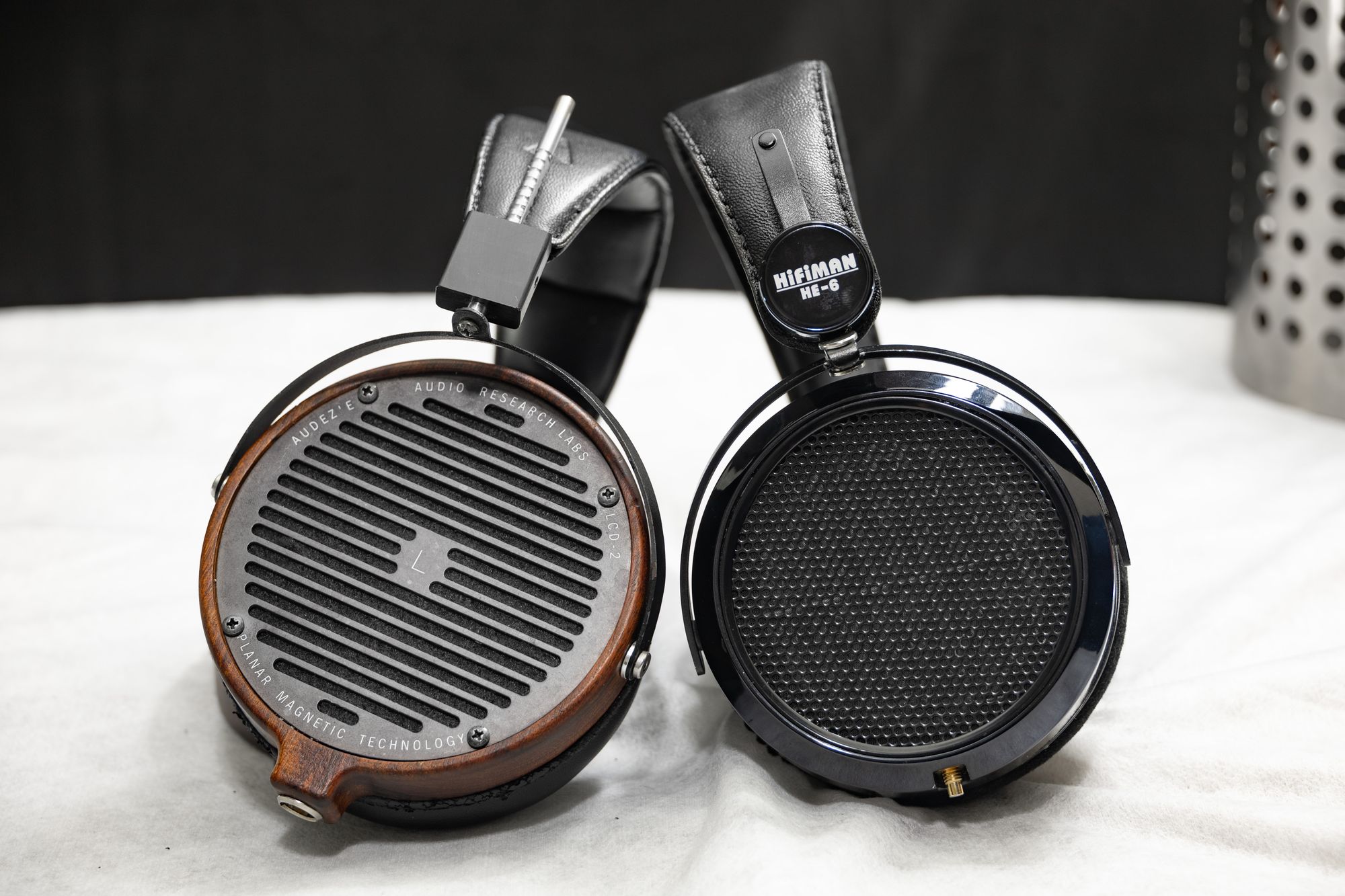
Ten years ago in 2012, Audeze was hot off the release of the LCD-3 and the personal audio market was a very different place, both in scope and trajectory. Some early pioneers from the era no longer occupy a similar place in today’s competitive marketplace. Audeze, Hifiman, ZMF, and Dan Clark Audio (DCA, formerly Mr.Speakers) were all wildly different entities back then. 2012 was a time for reading forum posts about different local meets, notably how a handful of audiophiles sized up the Audeze LCD-2 against the Hifiman HE-6. Both were labeled as flagship headphones, the LCD-2 sold for $1000 and the HE-6 was priced at $1300. Another subsection of the audio market centered around modifications of the Fostex T50RP headphones, and two members of the community that sold these modified Fostex headphones were Zach Mehrbach and Dan Clark behind ZMF and DCA respectively. The HD800 was reigning supreme in the dynamic driver debates online and headphone measurements were basically a semi-regular gift from Tyll Hertsens of Innerfidelity, Jude Mansilla of Head-Fi, etc.
Fast forward to September 2021 and there are plenty of folks in the community with industry-standardized measurement devices. Each of the budding entities in 2012 I mentioned now has a unique place in the personal audio market. DCA manufactures planar magnetic headphones in-house, with an additional electrostatic headphone named “Voce”. ZMF produces beautiful dynamic driver headphones with artisanal wood and polished metal. Hifiman has entries in the audio space at every price point from the budget-conscious Skullcandy in-ears to rubbing shoulders with the ultra-expensive Sennheiser HE-1.
As an outsider looking in, Audeze is possibly the most interesting entity from the group mentioned above. Fans of the brand will be familiar with manufacturer name “Audez’e Research Labs,” and I find that nomenclature remains apt today. While not the most technically-proficient electrostatic headphone compared to its competition, the CRBN is an innovative creation spawned from the partnership of Audeze and the UCLA School of Medicine. This is the first collaboration between a audiophile brand known for planar magnetic headphones and a medical research body, which on its own speaks to Audeze’s commitment to research and innovation. I ask you, the reader, to think of the modern audiophile brands that are willing to put their name on a gaming headset. Both the Mobius and Penrose support that branch of consumers with feature-packed wireless headphones that can be paired with millions of electronic devices.
Even more recently, Audeze is branching out into the professional audio market in earnest with their Manny Marroquin series of headphones. The “Research Labs” aspect of Audeze’s history seems to continue flexing its muscles for the philosophy behind each new release.
This brings me to the subject of this review, the LCD-5.
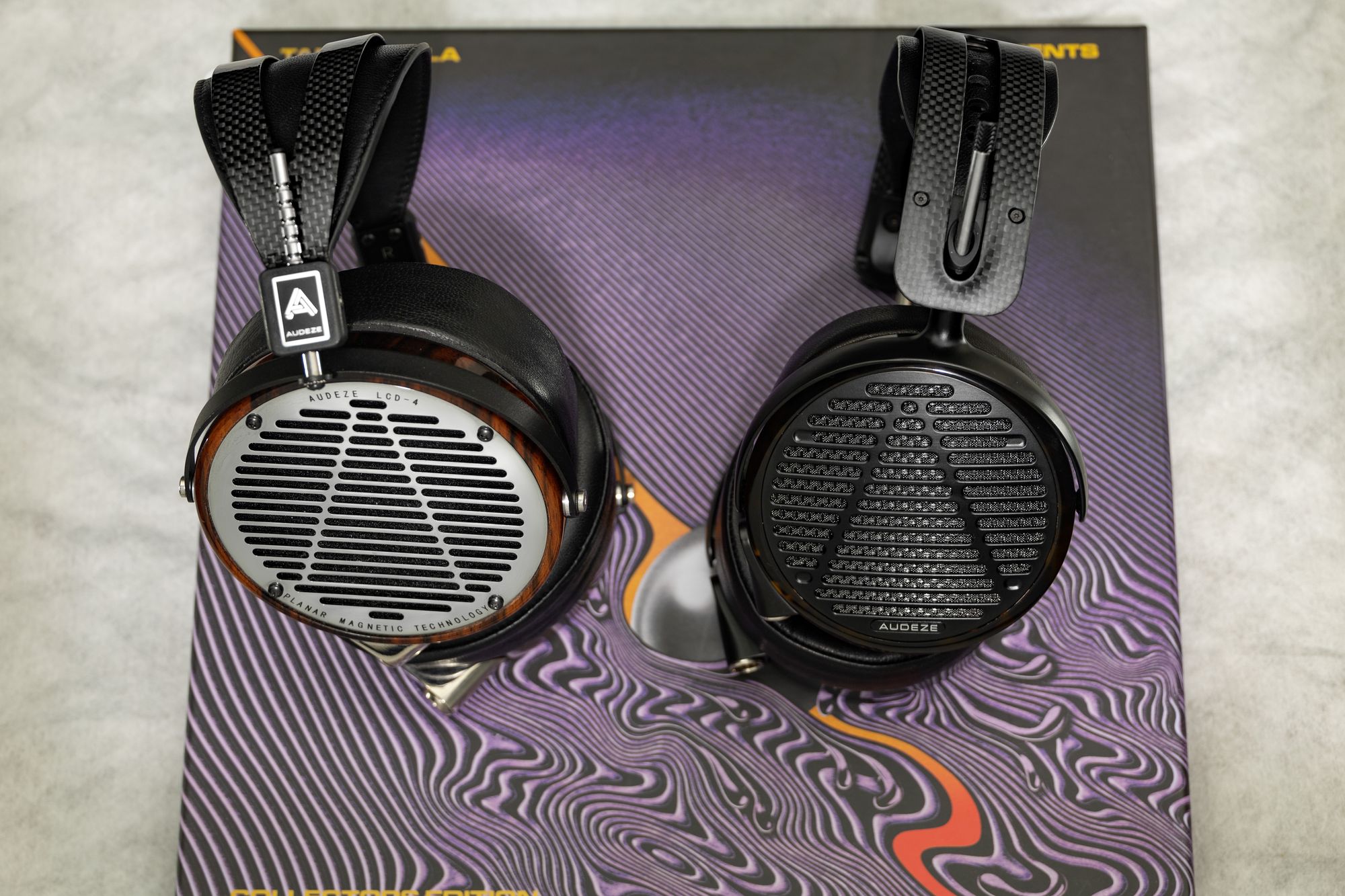
Red Sky in the Night
The newest flagship LCD release is quite the face-lift from Audeze, with acetate replacing the trademark wood rings around the previous LCD flagships. Gone are the chrome grilles in favor of a matte black grill with the signature A still on display. With a reduction of about 300 grams in mass from its predecessor, the LCD-5 use a set of concave leather pads that abandon the signature thick flat-angled earpads. The weight savings provide a much more streamlined experience on the head, however, I notice the cable weight a little bit more compared to other Audeze LCD headphones I have owned. Currently, my complaint with comfort on the LCD-5 is regarding the earpads. Their contact area relative to the amount of clamping force provided by the older v1 headband creates a hotter spot than I’d like around my ears. It’s not something disturbing to a listening session later in the evening, but is bothersome after multiple hours of use, especially continuously.
The LCD-4, however, is more comfortable on my head in those same use cases it shares with the LCD-5. When I’m at home and able to turn on a desktop amplifier, the LCD-4 and 5 get the same amount of head time over the course of a given session. I’ll take breaks to get something to drink, I’ll stretch away from the screen for a bit. But the weight distribution of the 4 on my head is easier to tolerate than the pressure the pads create around my ears of the 5.
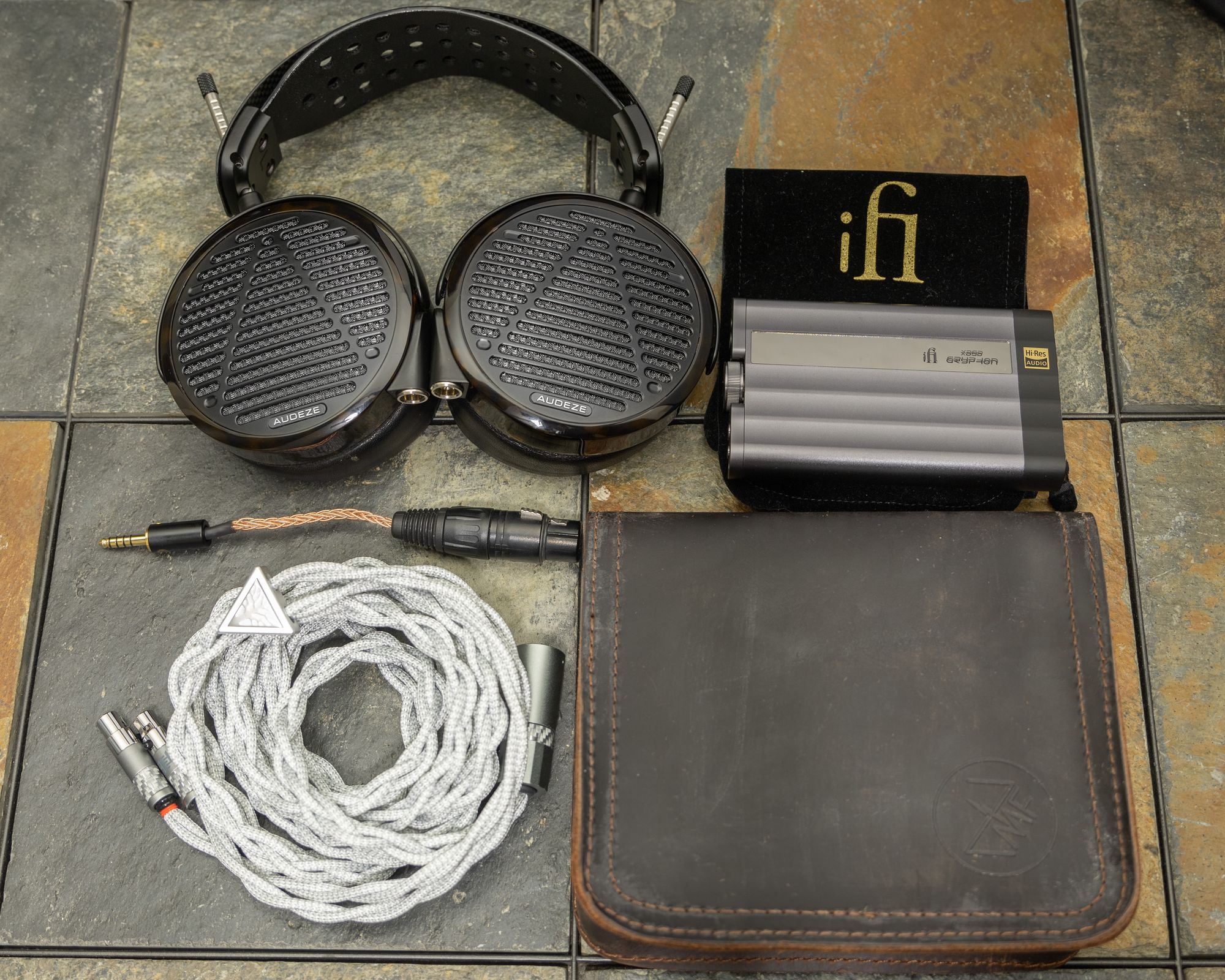
A bit of a detour here, but my last few pairs of glasses carried a similar tortoise shell pattern to the LCD-5’s acetate rings, and this, in addition to the LCD-5’s smaller form factor, allows for me to comfortably wear the LCD-5 as both a fashion accessory and a listening device. I cannot say the same things about the LCD-4, as those are a bit more of a burden to transport due to weight, while having an inability to lay in a flat case similar to a Bose or Sony ANC wireless headphone.
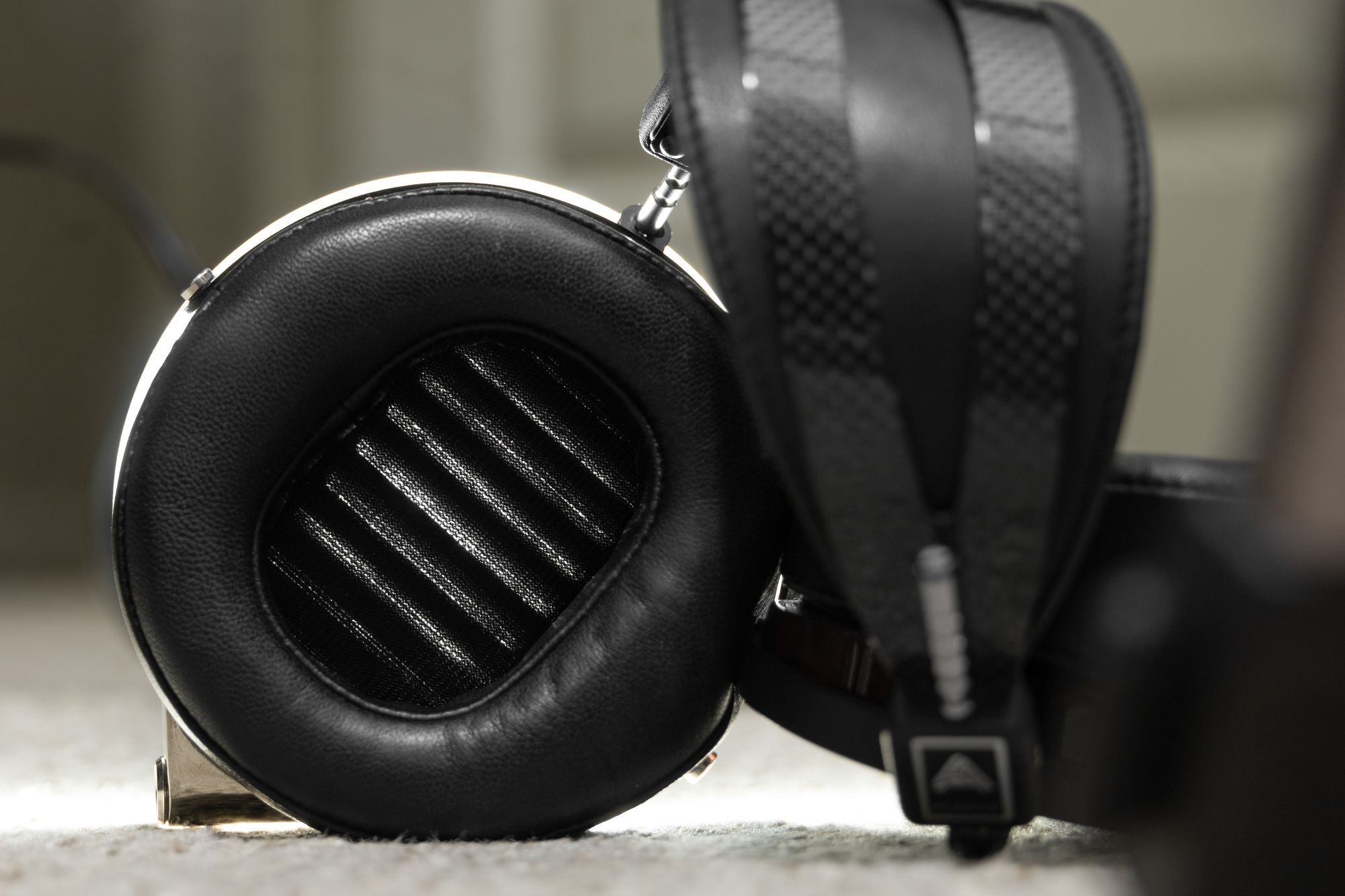

Additionally, the LCD-5 sports a single-sided magnet structure compared to the LCD-4’s double-sided magnet structure. For reference on the weight differences, on Audeze’s site the LCD-GX is single-sided and is listed at 454g, while the LCD-X is double-sided and comes in at 612g. Finally, in a conversation with current CEO and founder Sankar Thiagasamudram, I was informed the spacing in between the magnets was increased on the LCD-5 compared to the previous LCD models. These magnet structure changes saved a few grams on the head, but had a more controversial effect on sound.

The Sound of a Sailor’s Warning
The LCD-5 physically has new clothes compared to the LCD-4, and the aural experience is almost entirely distinct as well. The feature with the most effect on technical performance while comparing the two Audeze flagships is the magnet structure. One of the reasons I adore the LCD-4 is for instantaneous punch from bass hits, which I feel bests or at least rivals all other headphones in the audio space. The LCD-5 uses a single-sided magnet structure, and I feel it ends up sounding slower and less authoritative than many headphones in Audeze’s own lineup.
For the last nine months, I have been coming to grips with contextualizing my appreciation for this headphone. I have issues with the LCD-5’s performance when I’m listening to my favorite tracks in my Roon library compared to my references. However, then I consider how spacious the headphone sounds and how easy it is to keep listening to LCD-5 on the chain I am currently using. I recall how the LCD-5 sounded at CanJam SoCal (2021) and NYC (2022), and each setup told me different things about why I liked it at home with my gear versus the component selections at the audio shows. I first heard the LCD-5 on the Weiss DAC 502, which is an almost five-figure Digital-to-Analog Converter (DAC) with a built-in headphone amplifier. That comparison with my LCD-4 close by indicated to me that there was space for both to exist at the same time. I then revisited the booth in the closing moments of the show to hear it paired with a Bryston BHA-1 and Chord Qutest. Interestingly enough, I owned analogous versions of each component (Bryston BHA-1 and unofficially “BHA-1X”, Chord Hugo 2 with fixed output), thus I felt my impressions were at least more informed then they might have been had if the gear been wholly unfamiliar to me.

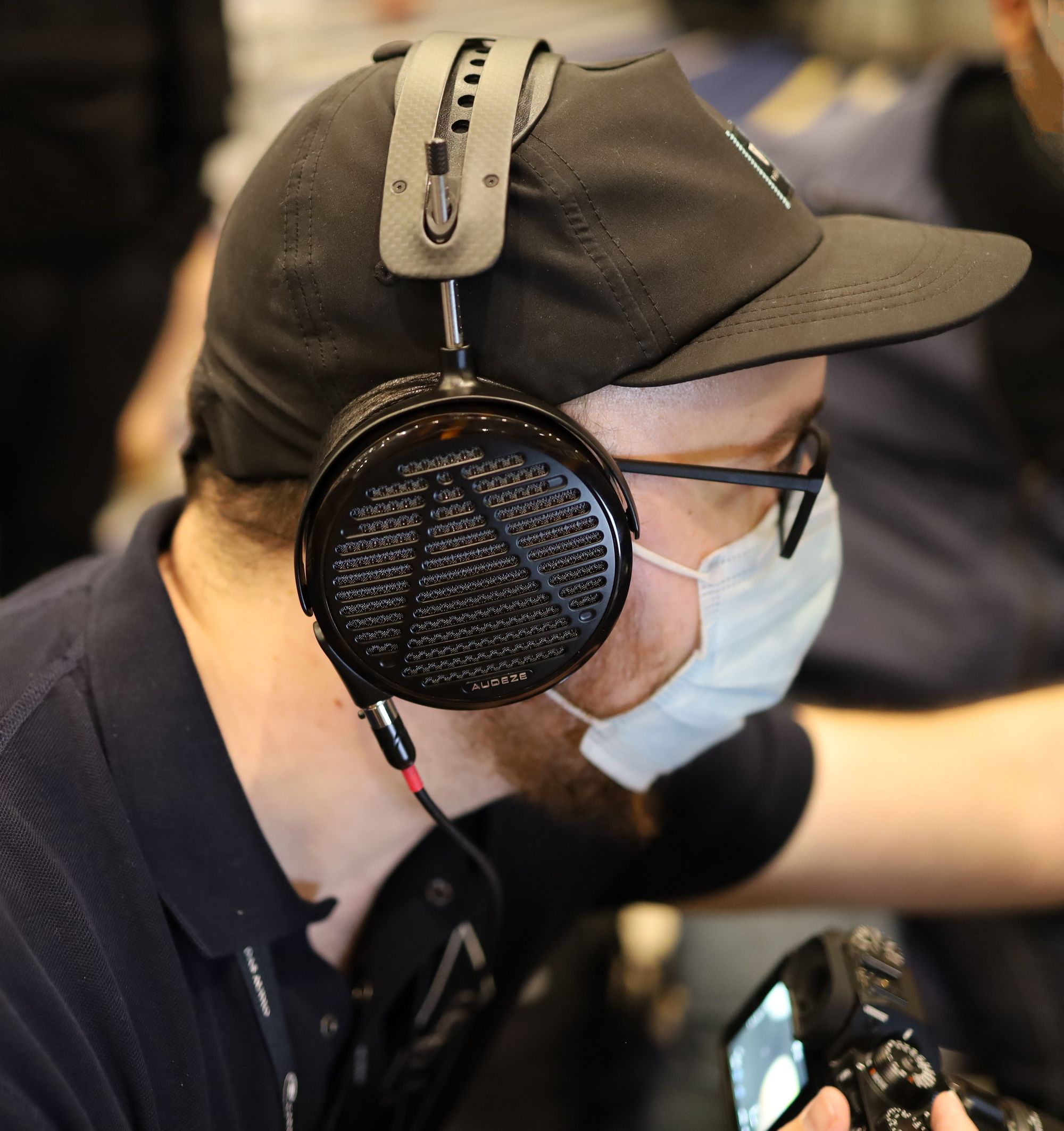

When I heard the LCD-5 on the BHA-1 at SoCal, the critiques deep down started to manifest. I heard the lacking bass response, I heard the treble etch relative to the LCD-4, I heard the unrefined malaise the laptop and Qutest sent downstream to the BHA-1 and LCD-5. I saw, but did not dare to try, a setup with the Chord Dave and LCD-5 directly plugged in at CanJam NYC this year. Which is to say, I saw pairings at the show that felt sub-optimal compared to what someone at home could do with a dedicated amplifier, separated from the DAC.
The Positives
In the time I have managed to spend with the LCD-5 at home across my available amplifiers, the newest Audeze flagship has more of an opportunity to shine compared to what I have heard at the two CanJams I attended. First, the leading edge of transients (and thus bass authority) feels muted and muffled compared to the LCD-4, but at home sounds significantly more enjoyable than what I experienced at organized audio events. I still enjoy how the LCD-5 manages quick passages as a planar with a single-sided magnet structure, but there is no denying that it falls flat in contrast to my LCD-4.
Second, the concave shape of the LCD-5’s new pad design creates a larger acoustic chamber around the ear compared to Audeze’s older pad shape. The headphone’s stage is expansive both in the depth dimension, with axis perpendicular to the opening of the ear, and in the lateral area slightly behind my ears to about where my glasses extend from my face. I’d like to note here that I associate soundstage with speakers, headstage with headphones, and earstage with in-ears and earphones. All of the above referring to the presentation space the sound appears to be displayed in.
Lastly, the imaging capabilities of the LCD-5 as a headphone have left me satisfied after my evaluation period. A major caveat with headphone imaging, though, has been the ability to portray a true center image for me. Regardless of the headphone used, I always hear a nebulous phantom center in front of my head. While the LCD-5 is one of the more cohesive staging planar magnetic headphones, it like all other headphones still ultimately suffers to convey a complete picture around the head.
The Acceptable
Evaluating timbre in any headphones brings a lot of personal dispute to the table. When I first started my audio journey, I would have believed the LCD-5 to have great timbral characteristics. There is noticeable decay audible when listening to binaural recordings with the LCD-5. As I have matured in my appreciation of music, the term timbre has been refined to mean something more than what I originally understood it to be. Each natural instrument has a sonic profile. The recording space and process are two variables that can potentially affect how those instruments are perceived. Through this lens, the LCD-5 falls short compared to what sounds absolutely natural to me. There are speakers and dynamic driver headphones I find to convey music more naturally than the LCD-5, such as the Sennheiser HD580. The artificial color the LCD-5 imparts on natural instruments is similar in inaccuracy relative to a true neutral as the LCD-4’s color. I find the LCD-4 to approach that inaccuracy from the direction of a glass half-full to the LCD-5’s glass half-empty.
The Negatives
Conversely, what I don’t like about the LCD-5 becomes a laundry list relative to the LCD-4. The tonality of the LCD-5 feels a bit cold and dull, a bit like a pair of studio monitors. When I grab for an LCD headphone, I like the idea of treating it like a ticket to the VIP section. The LCD-4 sounds luxurious, it gives you a different taste on what’s possible from a headphone. When the LCD-5 conveys a bass hit, you hear the hit and decay and keep moving on. When the LCD-4 goes through the same passage, you feel its impact against your ear, every single time it’s requested. Dynamics, both macro- and micro-, have fallen behind on the LCD-5 against my standard of the LCD-4.
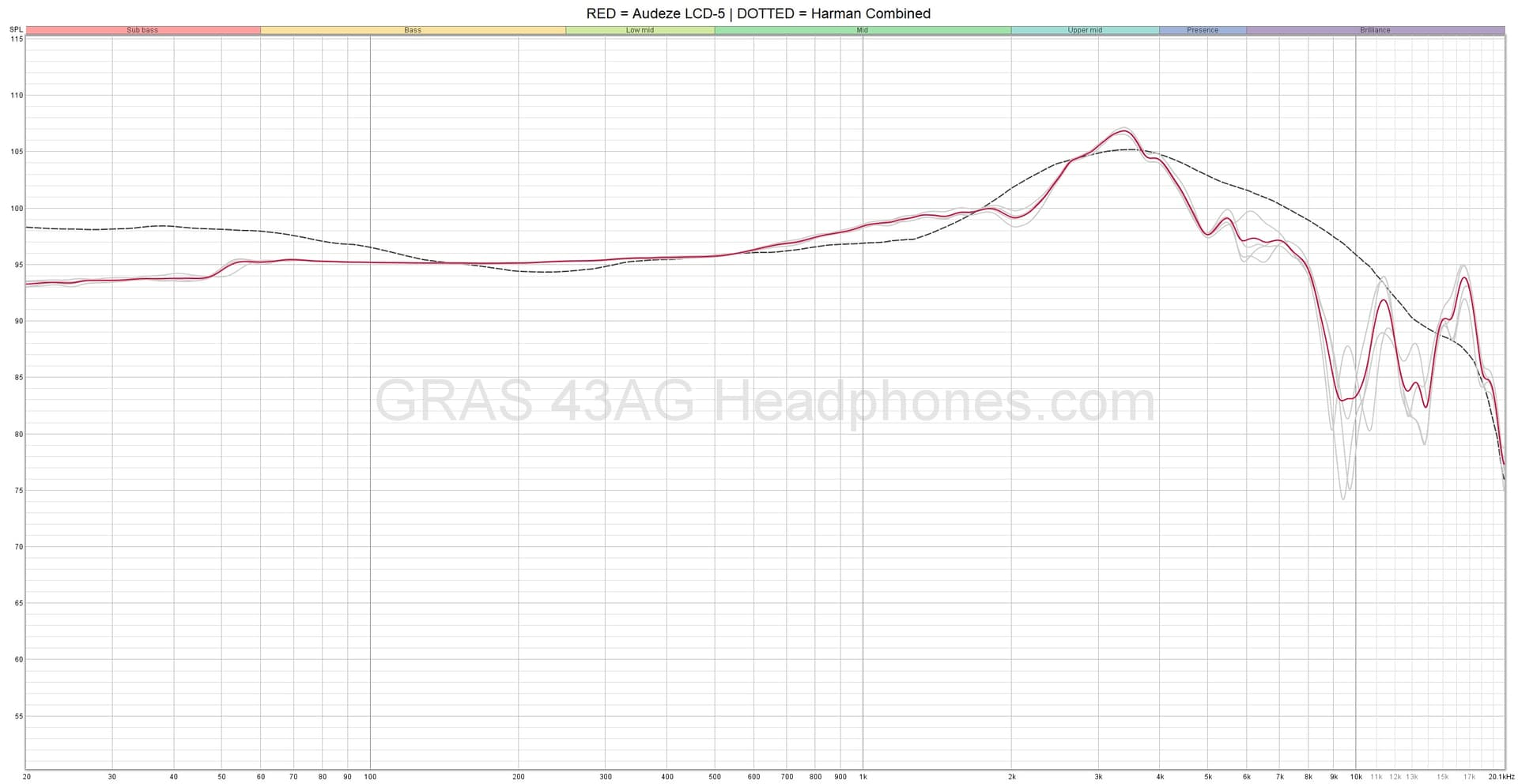
Midrange and treble are what I was hoping the folks at Audeze would be able to nail after years of online critique. Discourse from colleagues stemmed around the frequency response graphs of various Audeze LCD-series headphones across different measurement devices. I was hopeful, because the new era of Audeze seemed to trend more towards headphones that appreciated, but did not need EQ rather than being a well-known caveat of ownership with the previous flagship LCDs. The Mobius, for example, featured significant DSP to achieve more preference-target adherent presets for consumers. The LCD-GX upon release was one of the best measuring headphones relative to the other LCD headphones with respect to consumer preference targets on industry standard measurement devices. First measurements of the LCD-5 shocked me with their target adherence, but unfortunately it seems the LCD-5 requires more EQ filters and overall adjustment to my target preference than my LCD-4 does.
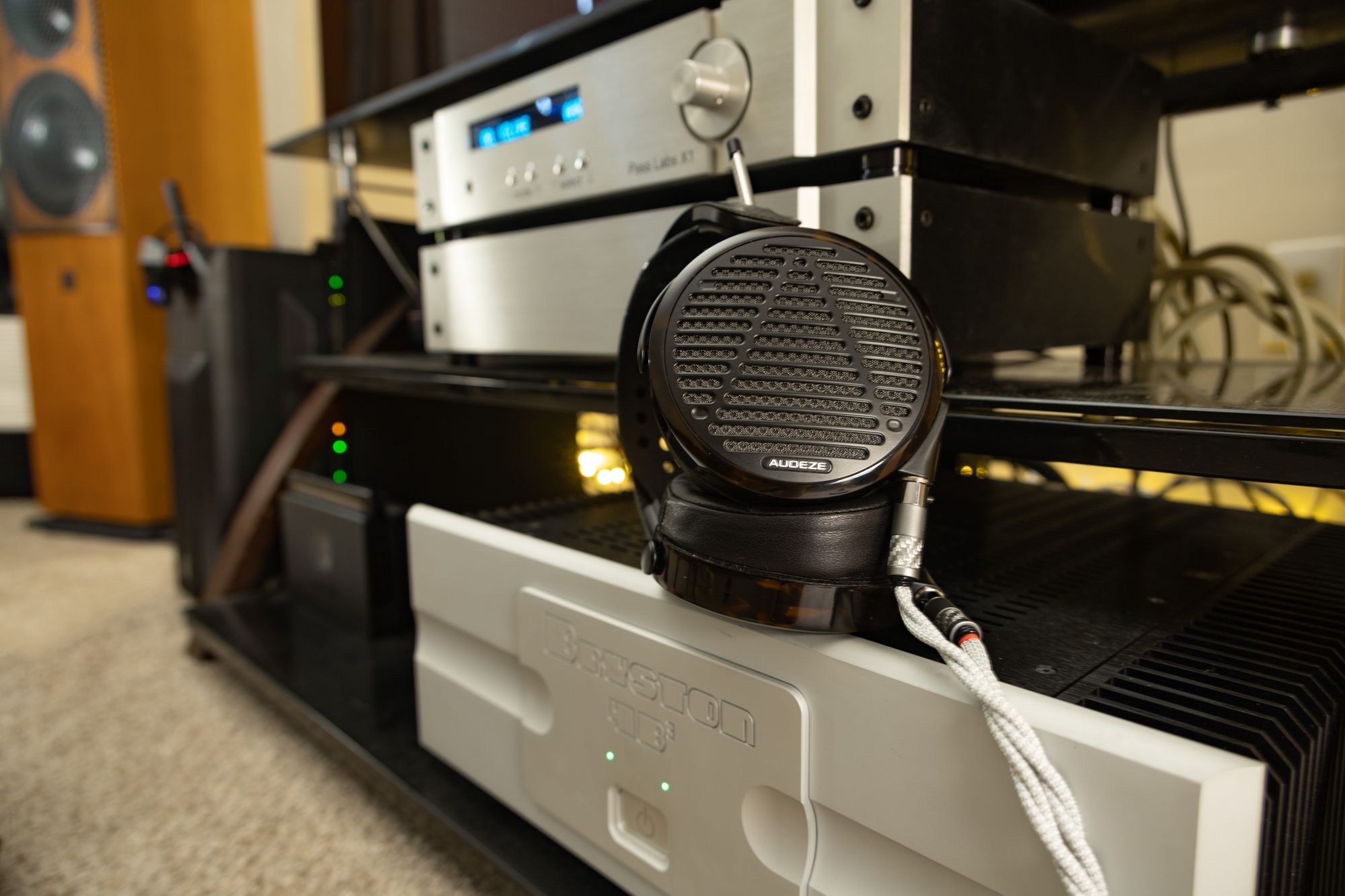
The Amplifier Debate
One of the things I enjoy with the LCD-5 is the ability to pair it with power amplifiers. I used one integrated and one power + pre-amplifier combo to see how each changed the perceived response of the LCD-5. The Hegel H360 gave the LCD-5 a slightly warmer, grunted, “meat on the bones” kind of character when paired with the Bricasti M1-SE. Around this same time, I experimented with my Bricasti’s network card against the AES system I had built over the last year or so. I ended up using the network card on the M1-SE with the LCD-5 and Hegel pairing since I got a more balanced subjective result, with things like a blacker background, more incisive attacks. The convenient dissection of DSD vs PCM was possible on this setup was a welcome surprise to using the network card.
The variety of amplifiers used indicated to me that the LCD-5 lacked dynamic contrast. Where dynamic contrast—the difference between the loudest and softest sounds—on other planar magnetic headphones I love like the Hifiman HE-6 and Audeze LCD-4 provide more explosiveness and tactility than the LCD-5 does. In addition to dynamic capabilities, the LCD-5 provides a pleasing amount of resolution for a flagship headphone. After visiting a handful of CanJams and hearing a whole host of competing flagship headphones, I struggle to complain about the LCD-5’s resolution. Yet, I hear less information conveyed by the headphone than what the Sennheiser HD800 and Focal Utopia display on the same pieces of gear.
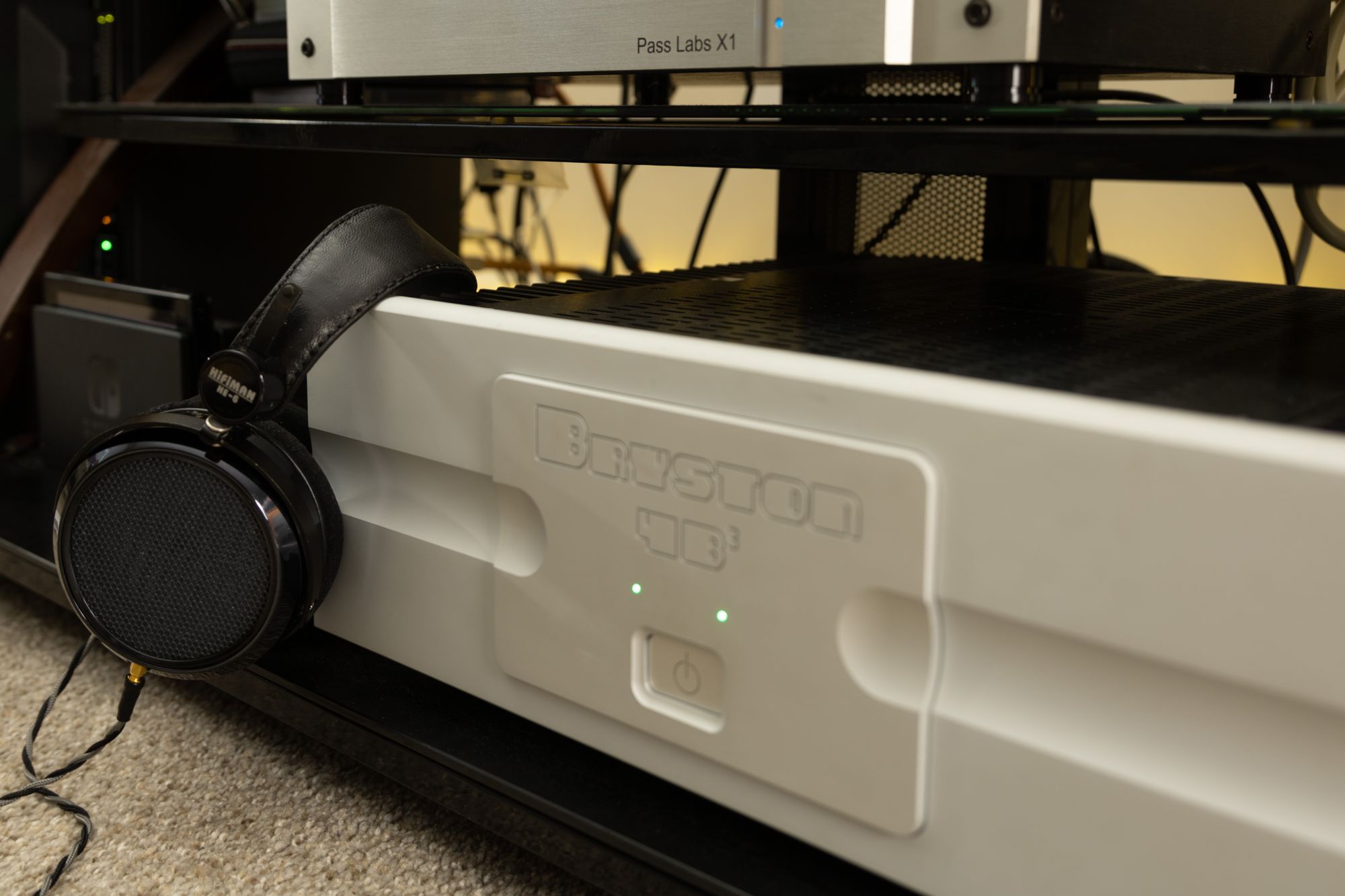
Regarding the LCD-4, I rarely get the inkling to hook it up to a power amplifier. The impedance of the LCD-4 is a pleasant 200 ohms and pairs nicely with my tube amps and Bryston headphone amplifier. The LCD-5 comes in at 14 ohms, and has a sensitivity rating that brings around an all-too-familiar goblin regarding headphone sensitivity and amplifier pairings. This particular gate-keeping technique in the audio community with lower sensitivity headphones rarely applies to me. I listen conservatively and quietly compared to my peers. I have exchanged many devices to fund further discovery with a handful of notoriously insensitive transducers, such as Abyss’s Diana Phi and 1266TC, AKG’s K1000, HEDD Audio’s HEDDphone One, and Hifiman’s HE-6 and Susvara. At the end of this transaction-based journey, I can conclude the following about these lower sensitivity headphones: The audiophile space is populated with impassioned fans who enjoy their headphones on curated source chains, and the common thread in the gate-keeping isn’t the headphone... it’s the individual behind the dialogue that has customized the experience, and is also at times using the curated gear as goalposts to try and keep them superior in a discussion.
I take you on this detour because any number of things can and do contribute to the character of the headphone being altered, such as plugging into a different amplifier, changing the DAC, messing with cables, using local music vs streaming, and so on. Even the mood I am in when I’m evaluating has an appreciable effect on the end result. These are all variables that I could go through over the course of time, provided there is a willingness to experiment. But ultimately, I don’t have the ability to explore these possibilities to their fullest extent at this point. I did not use this DAC with that amplifier, nor this cable and that player software, nor that whiskey with a snifter glass.
I tried Class A headphone amps and AB speaker amps. I tried passive and active pre-amplifiers. I tried R2R DACs and Delta-Sigma chip DACs. I tried Tidal, Qobuz, Spotify, and YouTube media streamed to my computer against local files ranging from .mp3 to lossless PCM and DSD. I tried filters on my DACs and messing with crossfeed parameters in Roon. I tried EQ profiles by ear, by my estimation via graphs, and EQ profiles from community members. I tried silver cables and switching how my DAC interfaces with the media player.
I have tried what I can, I have adjusted variables, and we finally arrive here.
This Sailor’s Delight or: How I Learned to Love the Storm
I stumbled upon an enlightening quote during one of my dives down the YouTube rabbit hole.
“When you’re learning to taste, there’s something that no-one really talks about, the process of learning to taste (and) developing that skill is great because you can detect, define, describe, and kind of communicate what you’re tasting. And beyond that, you don’t just know that something is good, you can explain why it’s good. Because of this, the highs get higher. You will enjoy certain foods or drinks even more than you did before and maybe even more than those around you. But, while the highs get higher, on average, what you eat and what you drink will get worse. And it will get worse because you’ll see all of the flaws, all of the mediocrity in a way that you didn’t before. This will take you to a bit of a difficult place where all you’ll want to do is just have good experiences. You’ll start dragging yourself across towns, across cities, looking for the better place so you don’t have to compromise. You’ll get there and you’ll still kind of tear it to pieces. And while the highs do get higher, very soon you realize they get further and further apart. They’re harder and harder to find. You’ll start to spend more time and more money chasing those highs.”
Back into the audio realm, this struck a chord with me because I felt like I had been on this path, even as recently as 2020. I was obsessed with the best, constantly exchanging one component for another. I felt as though audio was becoming more than just a taxing hobby, it was becoming a necessary bleed of income for me to stay satisfied.
A new headphone or component, while it can provide the temporary high of novelty, can be and usually is put aside in favor of the familiar and consistently excellent things I already have. This, however, does not mean I don’t constantly crave these new experiences and highs. While the LCD-5 initially had promise as something to potentially offer both novelty and lasting excellence, my feelings are not as positive as I’d hoped they would be after it was introduced claiming to continue and improve on the existing legacy of the LCD series.

But it isn’t the headphone I pick when I want to truly enjoy myself. That role is filled more satisfyingly by the LCD-4, which to me is more colorful, resolving, impactful, and importantly, more of a “flagship” experience than the LCD-5. I pick the LCD-5, on purpose, because I want a lightweight planar magnetic headphone that I can wear without worrying about ear temperature in the warmer months. A headphone that I can listen to music with, and then start creating music with on the same chain. I want something that I can watch YouTube videos with and keep on my head while hopping into a game without feeling like I’m doing a disservice to the activity in question.
Should that single audio device cost me $4500? For the end result, probably not. I would also be content doing the same thing with any 300-ohm Sennheiser HD6-0 series headphone. As a fan of Audeze, I can appreciate a headphone for the merits it brings me. It allows me to step out of my wheelhouse and into a different pair of shoes for the occasion, even if I personally think the heavier, less convenient predecessor is a more luxurious offering, more worthy of the moniker “flagship”. With the introduction of the LCD-5, Audeze showed us the course they’re charting in the current headphone landscape. Their new direction may seem like an unquestionable benefit to the majority of consumers, but I can’t say I feel as comfortable in these foreign waters.
Technical Specifications
Headphone Type: Over-ear, open-back
Transducer type: Planar Magnetic
Magnetic structure: Fluxor™ magnet array
Phase management: Fazor™
Magnet type: Neodymium N50
Diaphragm type: Nano-Scale Parallel Uniforce™
Transducer size: 90 mm
Maximum SPL: 130dB
Frequency response: 5Hz - 50kHz
THD: <0.1% @ 100 dB SPL
Sensitivity: 90 dB/1mW (at Drum Reference Point)
Impedance: 14 ohms
Max power handling: 5W RMS
Min recommended power: 100mW
Recommended power level: 500mW
Weight: 420g
Gear Used
Headphones: Abyss Diana Phi and 1266TC; Audeze LCD-4 and LCD-5; Aurorus Australis and Borealis; Focal Utopia; HEDD Audio HEDDphone; Hifiman HE-6 and Susvara; Sennheiser HD580, 600, 650, and 800.
Amplifiers: Bryston BHA-1, BHA-1X (Bryston BHA-1 + Bryston MPS-2) and 4B3; Burson Conductor 3X-GT; Eddie Current 307A Balancing Act and Studio Tribute; Elekit TU8800; First Watt F5 and F6; Hegel H360; Moon Audio IHA-1.
DACs: Bricasti Design M1-SE; Burl Audio B2 Bomber DAC; Dangerous Music Convert-2; Prism Sound Callia; Schiit Yggdrasil; Soekris dac1541
Digital: M.2 music drive; RME HDSPe AIO Pro PCI Express Card; Henry Engineering AES Digital DA 2x4
Comments?
Leave us your opinion.